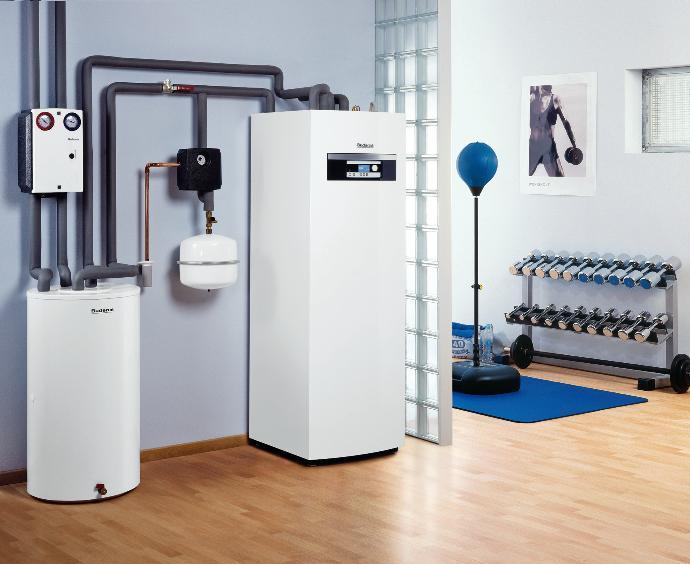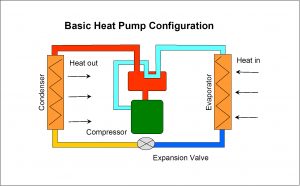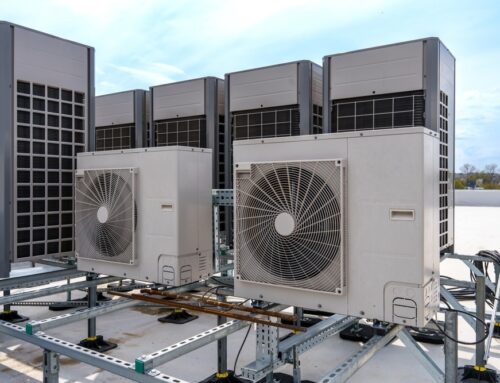The thermal pump was invented for the reverse heat transport: from less heated bodies to more heated.
How it occurs?
To understand the principle of operation of the thermal pump we will consider in more detail it operation and components.
The thermal pump is a refrigerator which main nodes are:
- The compressor (is in the outside unit)
- Condenser (internal heat exchanger)
- Expansion valve
- Evaporator (outside heat exchanger)
- azofigurative coolant (6 °C) comes to the compression compressor.
- The compressor using electrical energy gaseous coolant, at the same time its pressure and as a result temperature of coolant squeezes increase according to the universal gas law of Mendeleyev — Klapeyrona.
- Heated coolant (85 °C) under high pressure comes to the condenser. In the condenser there is a transmission of heat from a heated hladgent to the heat carrier (to air or water, depending on condenser type). As a result coolant there is a condensation process (transition from gaseous state to liquid).
- After the condenser the expansion valve is set. Function of an expansion valve — to reduce coolant pressure. Owing to pressure reduction temperature also falls.
- Having passed through an expansion valve coolant comes to the heat exchanger which is located on the street (evaporator). In the evaporator coolant evaporates (passes from liquid into gas) or easier to say begins to boil. At the same time the boiling temperature of coolant is lower than temperature of outside air (a normal boiling temperature of R22 freon in case of an atmospheric pressure of -40 °C). In the course of boiling freon selects warmly outside air. Further the cycle occurs again.
In other words, the compressor works not for heat generation, and for its relocation from the street in location. Therefore, spending only 1 kW of electric power for rotation of a shaft of the compressor, we receive from 2 to 5 kW of heat on the condenser.
Comparing of operation of the thermal pump with the traditional heating equipment
The principle of operation of the thermal pump differs from the traditional heating instruments based on combustion of fuel or direct conversion of an electricity. In such systems unit of energy turns into incomplete unit of heat. On the other hand the thermal pump, using unit of electrical energy, “transfers” from 2 to 5 units (kW) of heat (in depends on temperature of outside air).





